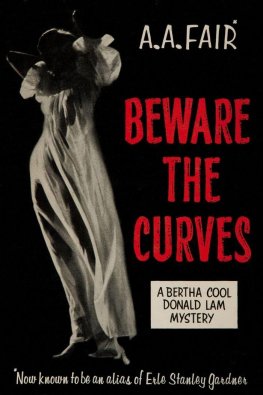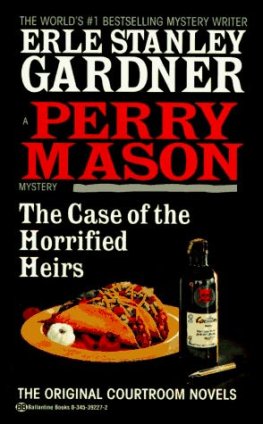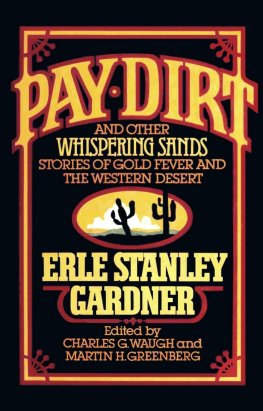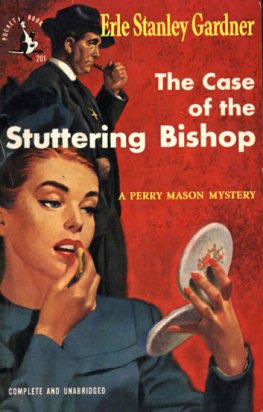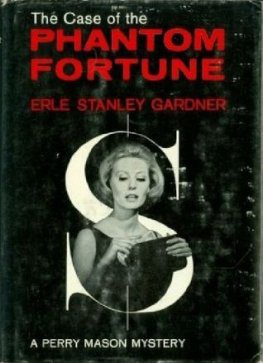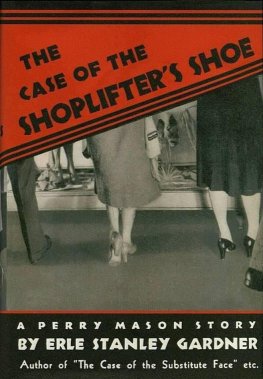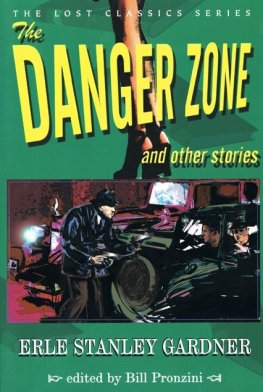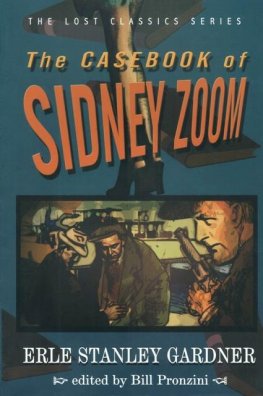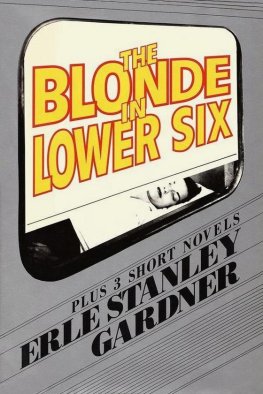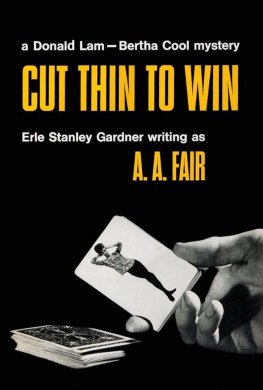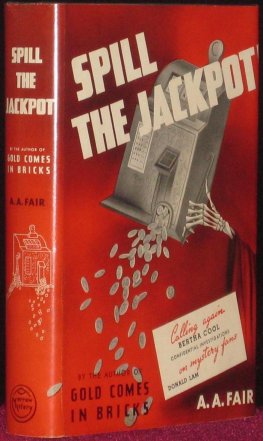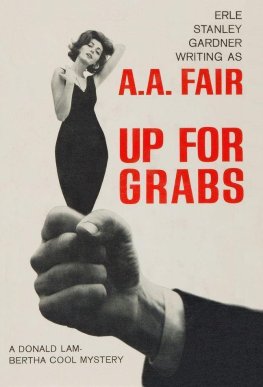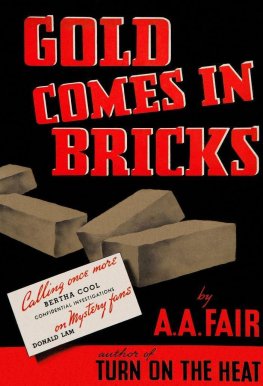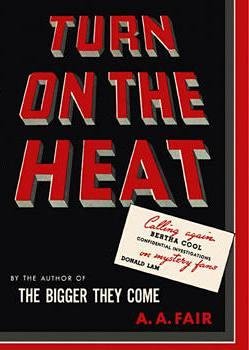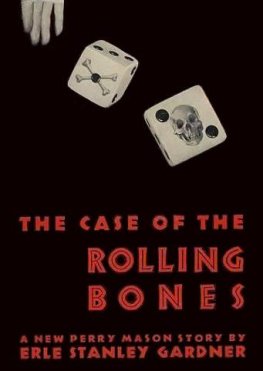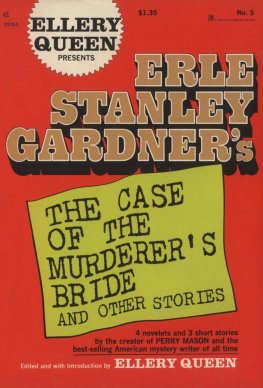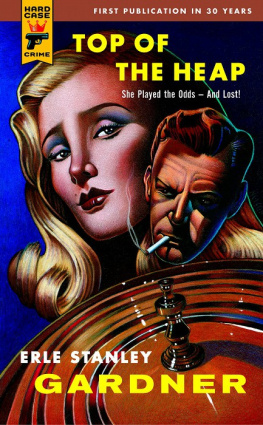A. A. Fair
Beware the Curves
For some years now my Perry Mason books have included Forewords describing interesting characters in the field of legal medicine. The books have been dedicated to the people described in the Forewords.
In the books I am now writing about Bertha Cool and Donald Lam (under the pen name of A. A. Fair) I want to depart from the field of legal medicine and tell you readers something about interesting personalities in the administration of justice.
That field includes law enforcement, crime investigation, and penology.
Few people realize the extent to which our penitentiaries are in effect crime factories. Professional penologists know some of the reforms which are needed but they hesitate to speak out because of public apathy in some instances, and public hostility in others.
My friend Arthur Bernard is the Warden of the Nevada State Penitentiary at Carson City.
This is a small prison, so small that Art Bernard knows all of the inmates personally.
Bernard started his career in penology some years ago as a political appointee. He became interested in his work and interested in trying to find out the causes of crime.
It is a peculiar thing that very few criminals know why they took up a life of crime in the first place. Like everyone else they arc inclined to rationalize and quite frequently to blame others.
Some of the inmates of the Carson City penitentiary wont even give a warden the time of day. Others are vicious, depraved killers. Some of them are shrewd cons, who will cheerfully tell any investigator anything he wants to hear which they think will result in some benefit, however slight, to themselves.
There are, however, a large number of prison inmates who want to complete their sentences and then go straight. Whether they can do so or not is another question. Some of them will, many of them wont. Society imposes terrific handicaps upon a man who has just been released from prison.
Art Bernard is doing a lot of work with these prison inmates, trying to help them, trying to find out how it happened they became law violators.
Art Bernard has a tape recorder in his office and, when one of these men gets to a point where he is willing to talk and talk frankly, Art Bernard interviews him, puts the interview on tape, listens back to the tape recording, makes his own comments and suggestions, then sends the tape recording to Dr. LeMoyne Snyder, the medicolegal investigator, and to me. I make duplicates of these tape recordings and we are gradually building up quite a library. Slowly but surely we are getting significant clues to some of the underlying impulses, drives, urges, and weaknesses which cause men to run afoul of the law.
It is an interesting work and I feel that it is a valuable work.
Art Bernard has been a miner, a prize fighter, a cattle and sheep rancher and broncobuster, and a state inspector of mines. He knows human nature, and to a very large extent he is self-educated.
Because he is essentially modest, he tends to minimize the very wonderful education he has given himself in the school of hard knocks. But because he has always dealt in the realm of practice rather than theory, and because so much of his knowledge was acquired at first hand in the hard way, he is essentially and entirely practical. He has little use for theory as such. He wont touch anything unless he feels sure it will work, and his background and training have been such that when he starts doing anything he makes it work.
Art Bernard tells me that some of the greatest tragedies of prison life come from the fact that the first offender has a minimum sentence of one year to serve.
Altogether too many of these first offenders are young men in the formative years of their lives. They are men who might well have been your sons or my sons. They have been guilty of some infraction of law and because of that have been sentenced to prison. They may have graduated from a field of juvenile delinquency and many of them have chips on their shoulders. However, in virtually every instance they have no real concept of prison life.
Perhaps the typical young man who is sent to prison for the first time acts as something of a smart aleck. He tries to swagger his way through life and he tries to be tough. That is largely a pose which he has adopted to reassure himself.
When the prison doors first clang shut on such a young man, when he first realizes the horror and degradation of prison life, when he is plunged into an existence of men deprived of women but not of sex, when he encounters the restrictions imposed by armed guards, strict discipline and narrow cells, there is a feeling of revulsion and of horror.
Art Bernard contends, and many thoughtful penologists agree, that if it were possible to release these young men from prison after they have been there just long enough to get a strong taste of prison life and to realize what it really is, they would never commit another crime as long as they lived.
Unfortunately, the minimum sentence is for a year. The young human male is remarkably adaptable and, as Art Bernard expresses it, after the first few weeks when the horror wears off the young man becomes acclimated to prison life.
After that there are two strikes against him, or perhaps it would be better to say, two strikes against the society which sent him to prison in the first place and which maintains the institution in such a manner that it is a veritable crime factory.
There is great need for reform in our prison institutions, particularly in regard to the first offender, as well as to the weak-willed individual who has drifted into a life of crime by following the paths of least resistance.
There is no space available here to comment on these matters, but I do want to call attention to the work that my friend Art Bernard is doing in making an intelligent study of people about whom society should have a lot more information.
So I dedicate this book to my friend, ARTHUR E. BERNARD, Warden of the Nevada State Penitentiary at Carson City, Nevada.
Erle Stanley Gardner
Big Bertha Cool displayed all of the ingratiating mannerisms of a hippopotamus acting coy during the season of courtship.
Donald, she cooed, I want you to meet Mr. Ansel, Mr. John Dittmar Ansel. This is Donald Lam, my partner, Mr. Ansel.
John Dittmar Ansel, a tall drink of water with the dark eyes of a poet, a thin straight nose, sensitive mouth, a profusion of wavy black hair, long tapering hands, and quiet clothes, was sitting very straight in his chair. He got up to acknowledge the introduction. His eyes were seven or eight inches above mine. I placed him at around six feet two or three. His voice was well modulated and quiet. His handclasp was the somewhat timid grip of a man who shrinks from physical violence.
It was difficult to imagine any greater contrast than that existing between big Bertha Cool and John Dittmar Ansel.
Bertha, seated behind her desk, went on in her most ingratiating manner, the diamonds on her fingers scintillating in the light from the window as she gestured with her hands.
John Dittmar Ansel, she explained, is a writer, Donald. Perhaps youve read some of his stuff I mean his material.
She paused, anxiously.
I nodded.
Bertha beamed.
Ansel said apologetically, I dont do a great deal of fiction, mostly technical articles. I use the pen name Dittmar.
He has a problem, Bertha went on. Someone recommended us to him. He asked for me because the name on the door B. Cool made him think I was a man.
Bertha smiled at Ansel and said, He was very gentlemanly about it, and was most considerate in making excuses, but I recognized the symptoms. I told him my partner was a man and I wanted him to meet you.

